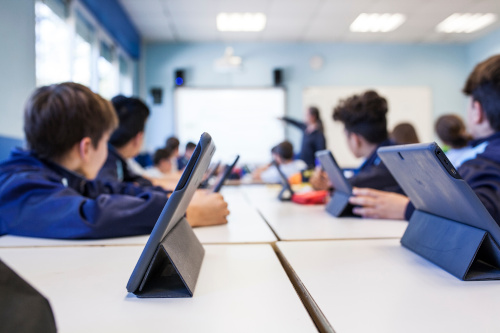Technology’s role has been elevated to an integral strategic function in today’s school districts. But getting everyone to understand the value of digital transformation can be challenging and test the persuasion and people skills of even the most seasoned IT leaders.
Here are some strategies IT teams can use to help build a supportive culture for ongoing technology investments.
Set Up Direct Lines of Communication
Less than 30 days into my role at Judson ISD, our district was hit with a devastating ransomware attack that led to a total network takedown. While there were many lessons learned from that experience, one of the silver linings was how it brought to light across the district how critical our technology systems are.
This realization served as a catalyst for our IT team to develop direct lines of communication with every department.
Now, each department in the district has a dedicated IT staff member who manages their technology, system, and platform needs. This structure helps bridge any communication gaps between teams and creates trust that IT is there to support each department and their goals.
Develop Your Business Case
It’s not a question of “if” but “when” – cyberattacks or some other event will impact your district sooner or later. And the older your equipment, the more vulnerable it is to negative events that will impact student learning and staff productivity.
The key is to be as proactive as you can in shoring up critical infrastructure. But many IT leaders struggle when faced with pushback about the need for technology investments or requests for increased funds. In these instances, leaders need to present a solid business case factoring in the total costs and impact to the district should the system or network fail.
Related:
5 safeguarding tips for schools this year
5 ways to make your IT department more efficient
In addition to hardware and equipment costs, be sure to include direct and indirect costs such as loss in staff time and productivity, any disruptions to student learning, critical data or system loss, reputational damage to the district, etc. All these financial implications help build a compelling case about how failing to update systems is incredibly risky and costly in the long run.
Paint a Picture in Real Terms
It’s easy to get caught up in technical nuances when discussing district needs, but many community members don’t understand the depths of technology infrastructure. This requires us to step out of our tech bubbles and change the way we communicate. Tailor conversations to non-technical audiences by painting a picture of how technology investments – and lack thereof – can and will affect staff, students, parents, and the community at large. Ask yourself, “How can I relate this to an everyday person? If I was a teacher or parent, how would this impact me?”
For example, Judson ISD is in the middle of upgrading our camera systems to increase campus security; however, many of our older schools have switches – that power our cameras – installed in classroom cabinets that are simply plugged into the wall and easily accessible. Some individuals may not view that as a problem or liability, so I have to outline the ramifications of one individual unplugging a cabinet in order to demonstrate the need. Additionally, upgrading cameras requires more switches to handle the increased power supply and more cloud storage to store each camera’s data for 6 months. Citing real-world examples of how vulnerabilities can be easily exploited helps stakeholders understand the project’s full scope and foster buy-in.
Plan for Future Growth Sustainably
Like many school districts across the country, Judson ISD is growing rapidly. Over the past two years, we’ve gained almost 3,000 new students. With that kind of growth, planning for the future is paramount. If you don’t develop a plan for what growth looks like at your district, then your systems simply won’t be able to keep up and will become quickly outdated.
On top of this, funding sustainability is critical and can’t be overlooked. Many districts use bond funds to replace systems, which can be very effective, but they need to have a plan to sustain and maintain those systems long-term. Every system comes with a cost, so developing a plan to spread those management, maintenance, and optimization costs out over time is very important. If we’re going to ask for taxpayer dollars for IT investments, it’s our duty to be responsible and spend wisely.
One way we’ve been able to cost-effectively optimize and scale our services is through key partnerships with providers like ENA. Our hosted voice platform has enabled us to provide more advanced phone features to staff, increase system flexibility and expandability across campuses, and reduce maintenance costs for the district.
Reduce Technology Footprint in the Classroom
One misconception about IT is that we believe more technology is always the answer. I often find more technology can mean more problems. Instead of tackling every issue with a new device or app, look for ways to strategically reduce the technology footprint on campuses and in classrooms while delivering the same or better results. As an IT team, we are constantly asking ourselves, how can we empower teachers and students with the best learning environments possible using fewer devices?
For example, outfitting every teacher with an overhead projector, smartboard, desktop computer, laptop, iPad, and more, can run you $10k-$15k per classroom. But with one interactive panel, a teacher is fully equipped to deliver high-quality classroom instruction and many of those previous devices become redundant. This philosophy not only leads to better allocation of funding, but it also reduces IT workload and the number of devices staff need to learn to operate – making everyone’s jobs and lives easier.
- The evolving requirements of a K-12 school network - April 24, 2024
- A bungled FAFSA rollout threatens students’ college ambitions - April 24, 2024
- How digital tools and AI can enhance social studies - April 23, 2024

